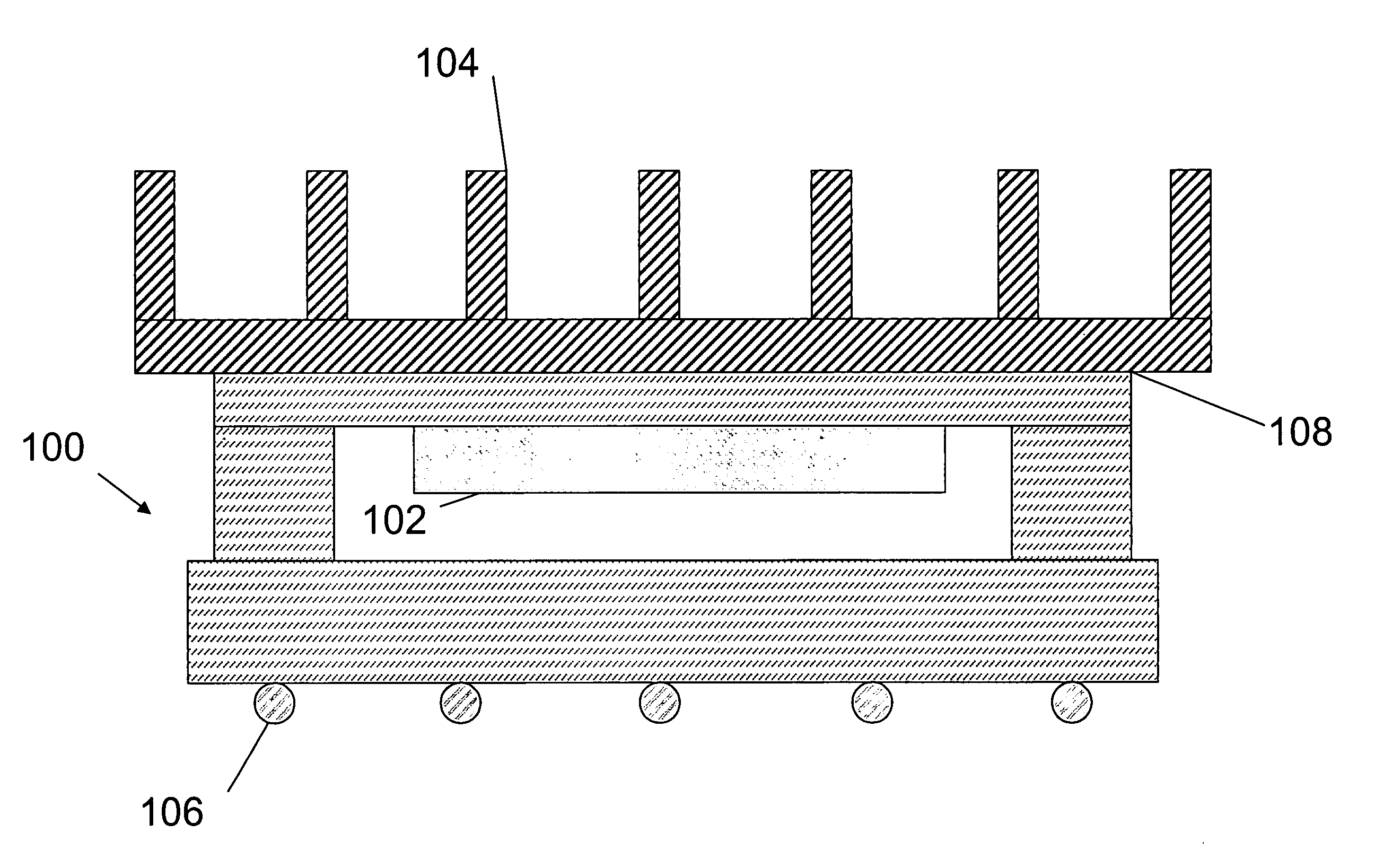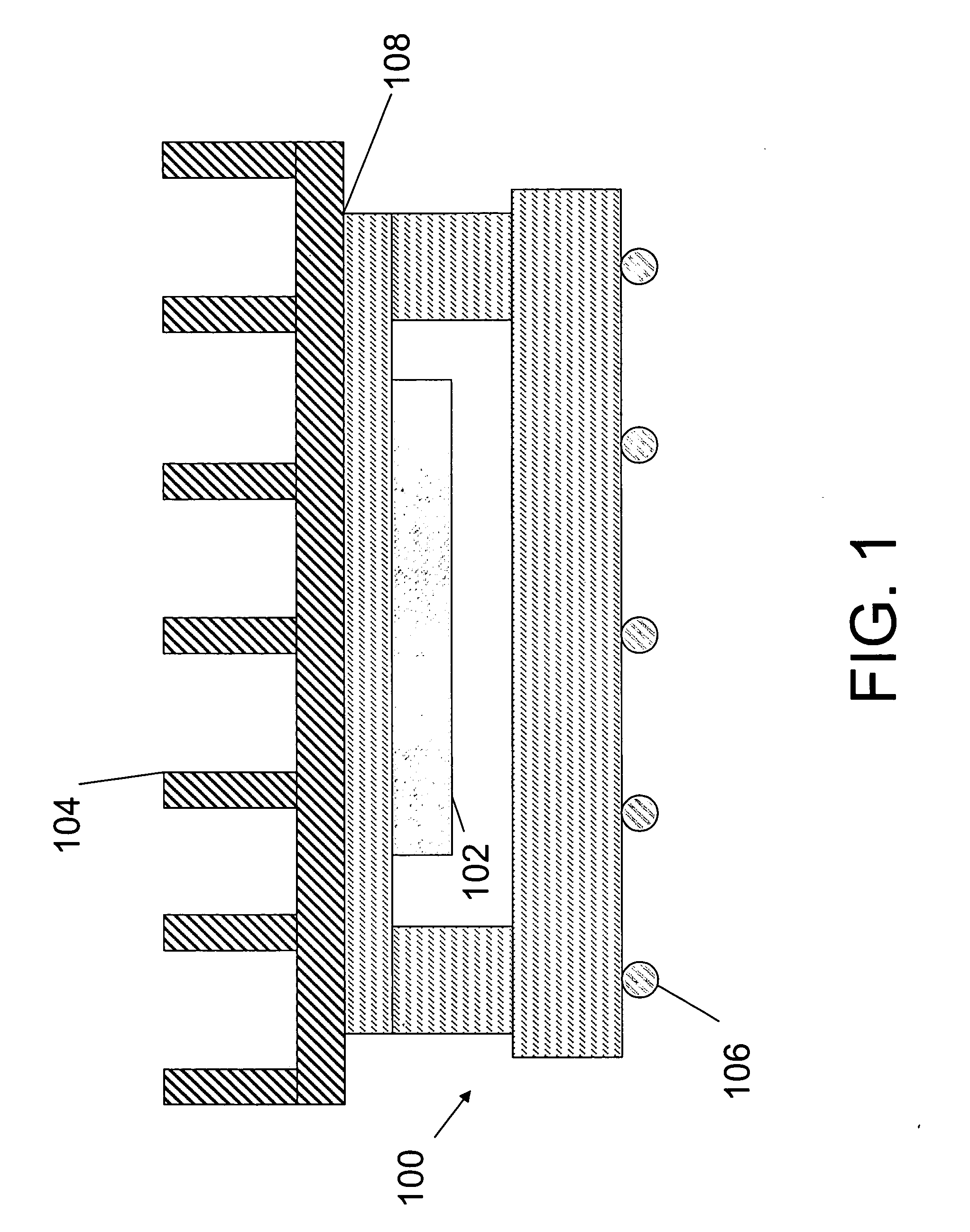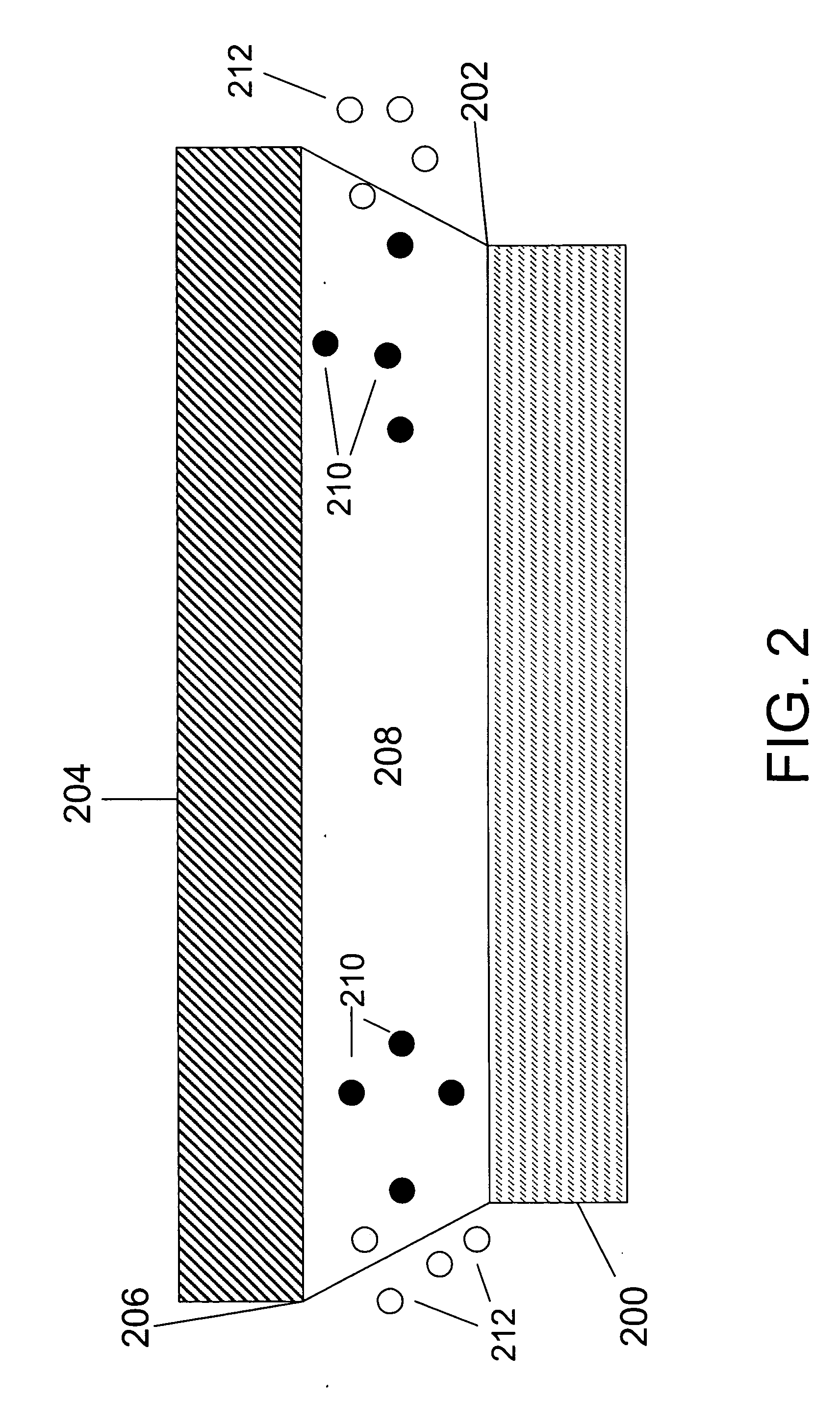Reactive gettering in phase change solders to inhibit oxidation at contact surfaces
a phase change solder and contact surface technology, applied in the field of heat sinks, can solve the problems of thermal coefficient of expansion (“tce”) difference between the two devices, inability to conduct away heat dissipation levels, and reduced operating li
- Summary
- Abstract
- Description
- Claims
- Application Information
AI Technical Summary
Problems solved by technology
Method used
Image
Examples
Embodiment Construction
[0010] In the following detailed description of embodiments of the inventive subject matter, reference is made to the accompanying figures which form a part thereof, and in which is shown by way of illustration, specific preferred embodiments of ways in which the inventive subject matter may be practiced. These embodiments are described in sufficient detail to enable those skilled in the art to practice the inventive subject matter, and it is to be understood that other embodiments may be utilized, and that mechanical, compositional, structural, electrical, and procedural changes may be made to the embodiments disclosed herein without departing from the scope, spirit and principles of the present inventive subject matter. The following detailed description is, therefore, not to be taken in a limiting sense, and the scope of the inventive subject matter is defined only by the appended claims. In the drawings, like numerals describe substantially similar components.
[0011] The terms “...
PUM
| Property | Measurement | Unit |
|---|---|---|
| temperature | aaaaa | aaaaa |
| temperature | aaaaa | aaaaa |
| affinity | aaaaa | aaaaa |
Abstract
Description
Claims
Application Information
 Login to View More
Login to View More - R&D
- Intellectual Property
- Life Sciences
- Materials
- Tech Scout
- Unparalleled Data Quality
- Higher Quality Content
- 60% Fewer Hallucinations
Browse by: Latest US Patents, China's latest patents, Technical Efficacy Thesaurus, Application Domain, Technology Topic, Popular Technical Reports.
© 2025 PatSnap. All rights reserved.Legal|Privacy policy|Modern Slavery Act Transparency Statement|Sitemap|About US| Contact US: help@patsnap.com



